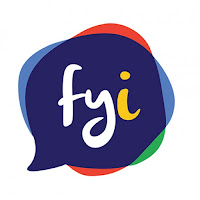A Note from Nurse Pyfrom at Upper Campus
Updated Head Lice Facts for Parents
HEAD LICE FACTS – A GUIDE FOR PARENTS- Check your child’s homework each night and check their hair for head lice. Stop lice in their tracks.
A common problem
● Lice are small insects that live on human hair.
● Having head lice has nothing to do with poor personal hygiene.
● Lice do not jump, hop, or fly, nor do they typically survive off their human host more than 24 hours.
● Lice are acquired by direct head-to-head contact with an infested person’s hair
● Check your children's scalps frequently, especially after sleepovers, school breaks, camping trips, or when a child appears to have intense scalp itching.
Once you see active crawling lice on a child's scalp, the child has been infested with lice for about a month.
Signs and symptoms
● Intense itching is the most common sign that your child may have head lice.
● Lice are about the size of a sesame seed; color may be grayish-white to reddish-brown.
● Nits are small, silvery-white and are attached to the hair shaft just above the scalp.
Commonly found around the nape of the neck and behind the ears.
How do I treat this condition?
● Use of an over-the-counter product is the first step in treatment
● Read and follow the instructions included with the product.
● After using the product, use a metal nit comb to remove dead lice and nits.
● Repeat the treatment with the product 7-10 days after the first application.
● If a child's case of lice isn't getting better after a couple treatments, used according to directions, the child may need a prescription head lice remedy.
Other steps to take
● Excessive cleanup in the home is not necessary
● Clothes, towel, and bedding should be washed in hot water or dried on high heat.
● The same can be done for the child’s toys or blanket or with items used in the child’s hair.
● Do not use insecticides on furniture, rugs or pets.
● Inspect other family members for head lice.
● Never treat your child for head lice unless you know he/she is infested. Smothering lice with mayonnaise, petrolatum, or olive oil is not recommended.
● It is important to avoid using dangerous materials such as kerosene, gasoline, paint thinners or turpentine to get rid of lice.
What else do I need to know?
● Children should understand the importance of not sharing combs, brushes or hats
● Children should also know that head-to-head contact with friends can transmit lice.
● Inspect your child’s head carefully and frequently for signs of lice and nits.
● Pay close attention to children who consistently scratch their heads.
● If your child has a case of head lice, please inform your school nurse and classroom teacher.
For more information- For reliable information, visit the web sites, American Academy of Pediatrics:
www.aap.org, the National Association of School Nurses: www.nasn.org, or contact your school nurse, or your family physician






